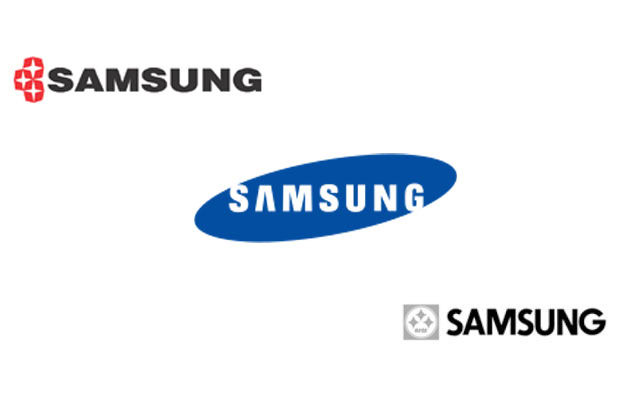Affiliate links on Android Authority may earn us a commission. Learn more.
Samsung is planning to put profits first for mobile, "preparing for the post-smartphone era"

When one takes a step back and reflects upon the incredible developments in the mobile sectors, it’s almost shocking how fast they have arrived. Phones grew in size, displays increased in resolution, processor plowed through with power, and even cameras captivated with some stunning shooters.
Of course, the market itself has also changed from what it once was some 8 years ago. Many of the key players have either seen their presence significantly reduced – HTC, for example – or else – like Sony – never saw mainstream success to begin with. Perhaps no company is facing challenges as high as Samsung however, who according to a new report from Korea, has decided to make a major change to its smartphone sales structure.
The news come via The Korea Times, which interviewed an unnamed Samsung executive who explained that:
We have been seeking growth in terms of shipments for years. Samsung is preparing for the post-smartphone era and that’s why our handset unit has identified profitability as a priority over growth.Samsung will keep the company-set share according to markets. We will launch promotional campaigns if we have to. But the company will be unlikely to initiate cash-intensive promotions to clear inventory and increase market share.
According to the executive, “key reasons” for the change include the aggressive emergence of keen competition from China, along with a blase response to “fancy features”.
The report continued, indicating that Samsung’s revised strategy will still target annual shipments of around 400 million smartphones, and that investors had been notified of the new business plan.
Following the change, the handset division’s profit margins are expected to increase as much as 17% during Q2 2016. During the first quarter, profit margins were calculated at 15.8%.

In the future, Samsung will reduce the number of budget devices being sold, however it is not likely to pursue aggressive pricing strategies as its Chinese rivals currently do.
Adding additional insight into the matter, Shelley Jang, a director at Fitch Ratings, agreed with the decision, with her agency predicting that Samsung’s profit margins will eventually decline to single digits, albeit on the higher end of the spectrum. She added that “the positive impact from the launch of new flagship models…will lead to revenue growth and modest margin improvement in 2016” and that “we expect Samsung’s financial position to remain intact over the next 12 to 18 months, backed by its robust cash generation.”
Analysis
The emergence of Chinese OEMs into the global or even regional markets has created a paradigm shift of sorts in the mobile industry. Whereas handsets produced by companies like HUAWEI and ZTE were once deemed low-end and poorly made by those in the western markets, recent years have seen premium products with metal builds that rival those of Samsung in many ways, including price-wise given that they cost but a fraction of what Samsung brings to market.
Likewise, intense competition from newer rivals such as Xiaomi, OPPO, and OnePlus have only served to further intensify the battle, especially in territories like China and India, both countries of which are critical for Samsung’s sales. At the moment, it still has control over the Indian market with a report from March indicating a lead of almost double the market share of its closest competitor, local OEM, Micromax.

That Samsung is now planning to operate on a more profit-focused platform with respect to its mobile handsets may nonetheless surprise some given how well it performed during the first quarter of FY 2016. Still, the overall picture is a pragmatic one: the days of endless growth and unrivaled competition are long since over. Samsung can technically afford to continue keeping up with the current status quo but there is seemingly no point when the returns will be diminishing and there is no realistic way to change that.
The next big thing…?
One aspect to consider, in light of this report, is just how the new strategy will change product development. If Samsung continues to spend mass amounts of fiscal resources on R&D for products that are increasingly less appealing to consumers, it may stand to, at best, only break even. This year a major push was made to include fingerprint sensors on more devices, as well as make sure that lower end products also made use of AMOLED panels to increase their viability.
Looking beyond even that, there is a valid question to be asked as to just how much money can be made from the pending foldable product that reports continue to claim Samsung is developing. While the ability to have a larger tablet-sized device and bend it down into a more manageable smartphone is likely to be appealing to many consumers, cost will definitely come into play. While such a device would technically do something new, it wouldn’t do something that can’t be substituted with two separate devices (i.e. a smartphone and a tablet) or else just going without one of the two entirely.

This is markedly different from say, a smartphone versus a feature phone debate, wherein the former is unlimitedly more capable and functional than the basic, rudimentary mobile products that used to be so popular and pervasive. The problem becomes magnified when considering that there are still many who feel Google, and Android in general, has failed to make the tablet a viable platform in the same way Apple has – i.e. with apps. As a result, it’s likely that a foldable product would be of more interest to either techies or else people who want to read a bigger page than say, a casual gamer. And in light of a recent report that apps downloads themselves are on the decline, the waters become even more murky.
Wrap Up
While today’s news is a far cry from the headline-making claim last year that said Samsung is going to bow out of the smartphone market, it nonetheless is indicative of a major change in business plans and proceedings. The company must indeed begin to look towards the future, beyond smartphones entirely, and into the future of IT and consumer – and home – electronics.
What do you think? Is Samsung set to keep up its blooming business or are things starting to sour?